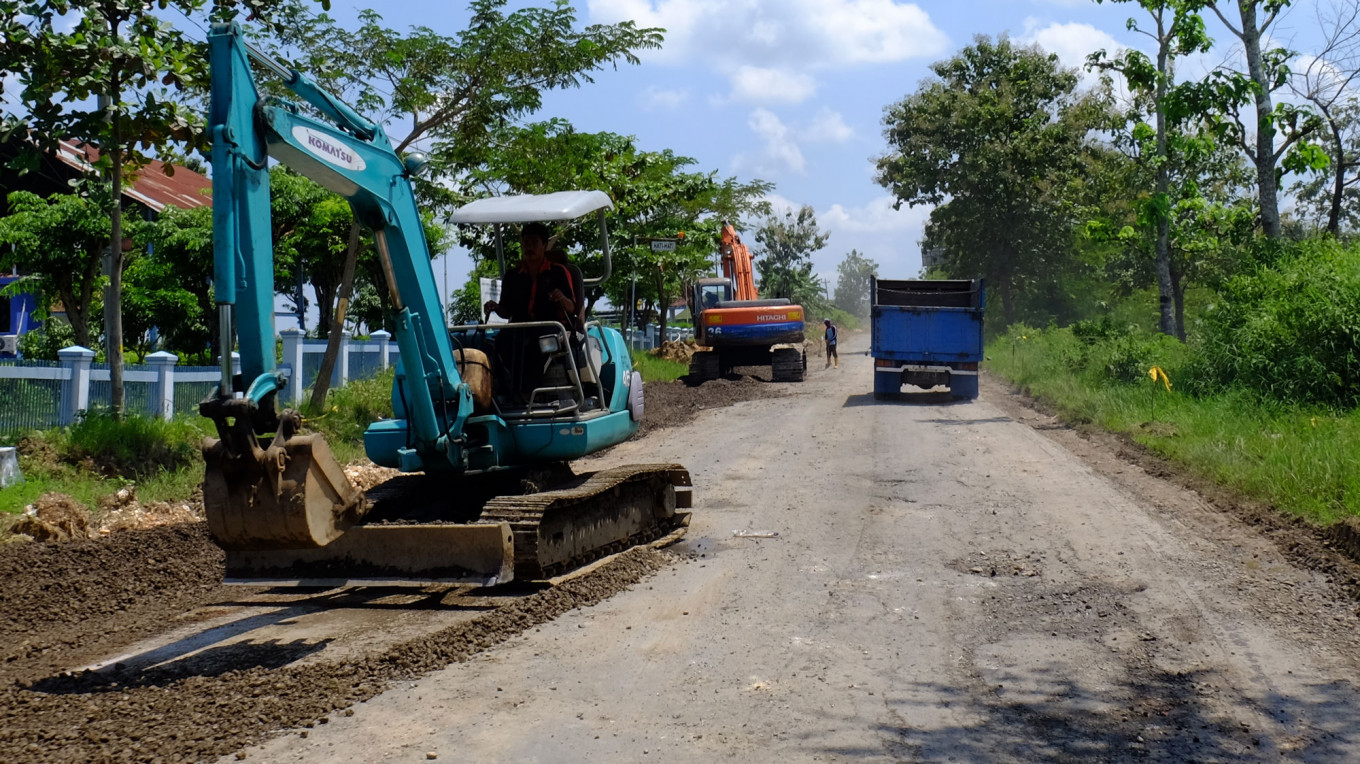Popular Reads
Top Results
Can't find what you're looking for?
View all search resultsPopular Reads
Top Results
Can't find what you're looking for?
View all search results2024 APBN to focus on economic growth through village, special autonomy funds
Change text size
Gift Premium Articles
to Anyone
F
ocusing on strong economic prospects in the coming year, the Indonesian government is optimizing the state budget (APBN) to encourage economic growth in 2024, with particular attention given to regional growth through village funds, special autonomy (Otsus) funds and fiscal incentives.
According to Luky Alfirman, the Finance Ministry’s financial balance director general, the government aims to provide a stimulus for each region’s development in order to create jobs, reduce inequality and provide better economic growth.
The policy direction in 2024 will be different, along with the implementation of three laws, the Harmonized Tax (HPP) Law, the Fiscal Relations between Central Government and Regions (HKPD) Law and the Financial Sector Development and Strengthening (P2SK) Law.
Village fund
In 2024, the government will distribute Rp 71 trillion (US$4.47 billion) in village funds, with 75,000 villages as targeted recipients.
"This year we have a breakthrough in village funds, with the number of villages alone reaching 75,000," said Luky.
Village fund policies are aimed at three objectives. The first is continuing the policy of allocating village funds in accordance with the HKPD Law through allocations based on formulas, providing additional allocations for the current year based on certain performance criteria and ensuring allocations take into account each village’s performance in managing village funds.
. ( Courtesy of Finance Ministry/.)The second objective is to empower the community and support sustainable development through focused and prioritized use of village funds through support for the handling of extreme poverty with a maximum of 25 percent through village unconditional cash transfers (BLTs), support for food and animal security programs with a minimum of 20 percent, support for stunting prevention and reduction programs, support for priority sector programs in villages through capital assistance for village-owned enterprises as well as village development programs according to each individual village’s potential and characteristics.
Lastly, the policies aim to improve distribution and encourage improvements in village fund governance. This will be carried out by separating earmarked from non-earmarked village fund distribution based on implementation performance, direct
village fund distribution from the National Public Treasury Account (RKUN) to the Village Treasury Account (RKD), and providing rewards in the form of accelerating village fund distribution for villages with an independent status.
In addition, the policies will allocate additional village funds to well-performing villages in each district or city, while at the same time applying sanctions in the form of stopping the distribution of village funds to problematic villages or where village funds have been found to be misused.
Special autonomy fund and additional infrastructure fund (DTI)
Along with the increase in the general allocation fund (DAU), special autonomy fund has also increased, as the amount of the special autonomy fund is calculated as a certain percentage of the total DAU. For example, the special autonomy fund for Papua is allocated 2.25 percent of the total DAU, so that in 2024 it is allocated Rp 9.62 trillion, and increased from Rp 8.91 trillion in 2023.
The special autonomy fund will then be divided to each province in Papua by considering population, area, construction cost index and regional performance index in managing the special autonomy fund.
The government has directed special autonomy funds to support accelerated development in accordance with the master plan, including reducing poverty, increasing investment and strategic activities such as scholarships, health insurance and increasing community productivity for indigenous Papuans (OAP).
In addition to the special autonomy fund, the government also provided a DTI of Rp 4.37 trillion, which was directed toward the development of infrastructure for transportation, telecommunications, clean water, electrical energy and environmental sanitation.
. ( Courtesy of Finance Ministry/.)Fiscal incentives
The Indonesian government has prepared a budget of Rp 8 trillion as a fiscal incentive for regions, with the aim of rewarding regions with the best performance in regional financial governance, basic public services and general government services.
Regions are also implored to improve the quality of regional financial management, the fiscal health of the regional budget (APBD), as well as basic public services in the fields of education, health, infrastructure and public government services.
"One breakthrough is that we want to provide greater incentives for regions that perform well, linking transfers to regions (TKD) instruments to regional performance," explained Luky.
The principle in providing fiscal incentives is based on fairness, where regions have equal opportunities. The regions can then be compared using the same performance measurements and indicators. Objectivity is also taken into account, utilizing performance measurements that do not give rise to multiple interpretations.
The next principle is measurability, which is evident in the use of quantitative and/or qualitative data that can be gathered and villages held accountable, which means that indicator data is obtained from government statistical institutions and/or ministries and institutions that have the authority to publish accountable data, with assessment indicators being directly under the authority of the regional government.
The incentives’ ceiling will be divided into two parts, with the first being Rp 4 trillion for the previous year's performance assessment for well-performing regions on government financial management, basic services, support for national policy focus and government policy synergy. In addition, the regions will also have to take into account underdeveloped areas, which must perform well.
Another Rp 4 trillion will be dedicated to the current year's performance. The details are set using certain criteria and categories over several periods as determined by Finance Ministry regulations.
Source: The Finance Ministry












